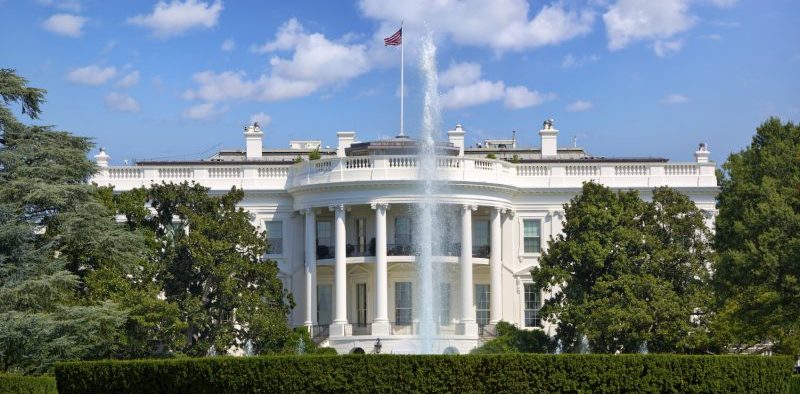President Trump is seeking slightly higher spending on federal cybersecurity next year, according to his recently released fiscal 2020 budget.
Conversely, Trump is also requesting a small decrease in federal IT spending during the same period, according to his proposal.
Trump’s budget asks for about $17.4 billion for cybersecurity-related activities in fiscal 2020, a 5 percent increase approximately $790 million more than the estimated total for fiscal 2019.
Despite this, the document does not represent the federal government’s overall cybersecurity spending because of funding for intelligence and military agencies.
“Due to the sensitive nature of some activities, this amount does not represent the entire cyber budget,” it states.
Though calculating overall federal cybersecurity spending is difficult with some items being classified, the budget lists the Defense Department (DoD) as the largest cybersecurity factor in fiscal 2020.
The budget has DoD paying $9.6 billion next year, a boost of about 9 percent from fiscal 2019 when the agency was marked for about $8.3 billion.
The document also proposes how the federal government should allocate spending for compliance with the National Institute of Standards and Technology’s (NIST) Cybersecurity Framework in fiscal 2020.
Released in 2014, NIST’s Cybersecurity Framework is a collection of best practices, guidelines and standards for managing cybersecurity-related risk.
Trump made NIST’s framework mandatory for all federal agencies in 2017 with the release of his executive order on “Strengthening the Cybersecurity of Federal Networks and Critical Infrastructure.”
The fiscal 2020 budget subsequently details how much spending Trump proposes agencies should spend on each of the framework’s five core functions – Identify, Protect, Detect, Respond and Recover.
Trump wants about $2.3 billion for the Identify function, which develops an organizational understanding to manage cybersecurity risks to systems, people, assets, data and capabilities.
About $2.7 billion is requested for Protect, meanwhile, which develops and implements appropriate safeguards to ensure delivery of critical services.
Roughly $962 million is next sought for Detect, which develops and implements appropriate activities to identify the occurrence of cybersecurity events.
After that, approximately $1.3 billion is sought for Respond, which develops and implements appropriate activities for acting against detected cybersecurity incidents.
Finally, about $213 million is requested for Recover, which develops and implements appropriate activities for restoring capabilities, resilience and services hurt by cybersecurity incidents.
Overall, Trump’s budget asks for roughly $7.4 billion in federal cybersecurity spending related to the NIST framework.
Trump’s request comes as multiple agencies struggle to modernize their IT systems and safeguard their cybersecurity.
These challenges are inspiring federal organizations to revisit their cybersecurity and IT modernization efforts as the details of Trump’s budget enter public debate.
For example, Trump’s wish-list coincides with the recent release of the Homeland Security Department’s (DHS) budget for fiscal 2020.
The budget requests about $11.4 million for DHS’s Cyber Talent Management System (CTMS) program, which exempts the agency from many of the laws for cybersecurity compensation and hiring rules.
DHS’s proposal notes that the agency “will hire at least 150 new cybersecurity employees using this system by the end of FY 2020” as part of the CTMS program.
Besides cybersecurity, Trump’s budget for fiscal 2020 also asks for a less than 1 percent cut to the federal government’s IT spending.
The proposal demands about $87.8 billion for IT spending next year, down from roughly $88 billion in fiscal 2019.
The $87.8 billion includes about $36.75 billion requested for unclassified DoD spending, a decrease from the agency’s approximately $37.92 billion in fiscal 2019.
DoD’s classified spending is not included in the analysis, however, making it unclear what, if any, impact that money has on the final total.
Among the civilian agencies, Trump’s budget pegs DHS as the biggest potential spender on federal IT with a request for roughly $7.11 billion in fiscal 2020.
DHS’s proposed spending accounts for 13.9 percent of federal IT spending, while the Veterans Affairs (VA) Department ranks second with approximately 12 percent, or roughly $6.12 billion.
Congress ultimately has the last word on the federal budget, with lawmakers having the “power of the purse” over the document’s final details during the appropriations process.
The budget nonetheless shows what Trump’s priorities are before his 2020 reelection campaign, a battle that will likely prove challenging with at least 16 candidates currently running against him.





Good breakdown, Mark. Saw that cybersecurity spending is down in civilian agencies, which is curious for sure.
[…] problem is enormous and growing faster than anyone can measure. The proposed 2020 federal budget for cyber security, which includes funding for the Defense and State Departments (among other agencies) is up a paltry […]
[…] problem is enormous and growing faster than anyone can measure. The proposed 2020 federal budget for cyber security, which includes funding for the Defense and State Departments (among other agencies) is up a paltry […]
[…] problem is enormous and growing faster than anyone can measure. The proposed 2020 federal budget for cyber security, which includes funding for the Defense and State Departments (among other agencies) is up a paltry […]
[…] issue is big and rising quicker than anybody can measure. The proposed 2020 federal funds for cyber safety, which incorporates funding for the Protection and State Departments (amongst different companies) […]
[…] problem is enormous and growing faster than anyone can measure. The proposed 2020 federal budget for cyber security, which includes funding for the Defense and State Departments (among other agencies) is up a paltry […]